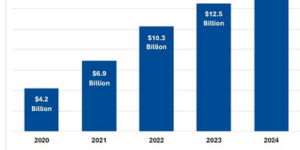Trade groups representing the property/casualty industry are fighting back against a push to apply global capital requirements to large U.S. insurers who have significant international operations. Their weapons: a new report likely to be widely circulated in Congress, and another round of testifying on Capital Hill.
They’re responding, in part, to actions by the International Association of Insurance Supervisors (IAIS), a Swiss-based group of regulators from nearly 140 countries. In October, the group completed a draft of what is billed as the first global insurance capital minimum standard, a regulatory requirement that American International Group Inc., Allianz SE and MetLife, along with six other too-big-to-fail insurers, will be required to follow. U.S. regulators may not ultimately apply the new global capital standards, and industry lobbyists are working hard to prevent their implementation.
First, the new report: The National Association of Mutual Insurance Companies (NAMIC) and the Property and Casualty Insurers Association of America (PCI) released a report highlighting how global capital requirements in this situation would be unnecessary and harm U.S. consumers.
Written by economist Robert Shapiro and backed by both NAMIC and PCI, the document determined that international standards would lead affected U.S. insurers to implement higher rates and reduce consumer choice across the industry. What’s more, the report concluded that specific property/casualty insurers affected by the regulations would have to raise U.S. homeowners’ premiums and would slow the rollout of new products.
“Accepting these new, European-style capital standards is unnecessary to safeguard the insurance industry,” Shapiro said in a prepared statement.
Meanwhile, lobbyists made their renewed case against international capital standards in testimony before the House Financial Services Subcommittee on Housing and Insurance on Nov. 18.
Among those submitting testimony: NAMIC. The association’s statement submitted to the hearing lamented that IAIS, which began “as new standards for cooperation and coordination among insurance supervisors,” is now producing “a series of new requirements” including the planned global capital standard.
“NAMIC believes the chief mission of the IAIS ought to be to facilitate a stronger global insurance regulatory environment through cooperation and coordination rather than attempting to create one-size-fits-all requirements for every country in the world,” NAMIC said. “If it is determined that the development of a capital standard should proceed, the various representatives of the U.S. that engage in these international [forums] must speak with one voice. And that voice must speak in defense of the U.S. market, existing regulatory structure, insurers, and especially policyholders.”
NAMIC said in its testimony that international standards as they are currently developing don’t take the U.S.’ legal-entity-based regulation into account, where risk is limited to one company. The European approach is problematic, it said, because it leaves capital fungible, where a regulator could require “its transfer from one legal entity to another.”
Michael McRaith, director of the Federal Insurance Office, testified to the committee that IAIS-developed capital standards will not be implemented until at least 2019, and that his office, the Federal Reserve and state insurance regulators continue to develop “a U.S. approach to insurance group capital.”
He said that any international standard, if and when it is applied domestically, would at that point be “consistent with past practice,” and tested for value, accuracy and impact on all levels. What’s more, he said, such a standard, before it becomes official, should be “tailored to the unique features of the U.S. insurance sector, promote competition, and consumer choice, and safeguard policyholder protection and financial stability. “





















 Severe Midwest Storms Result in Baseball Size Hail
Severe Midwest Storms Result in Baseball Size Hail  Is State Farm General Too Big to Fail? Calif. Rate Hearing Concludes
Is State Farm General Too Big to Fail? Calif. Rate Hearing Concludes  Bill Aims to Make Staged Accidents a Federal Crime
Bill Aims to Make Staged Accidents a Federal Crime  Insurers Need End-to-End Strategy to See Double the ROI in AI Implementation
Insurers Need End-to-End Strategy to See Double the ROI in AI Implementation 






